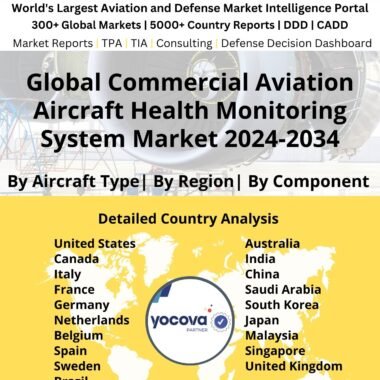Description
The aviation industry has been at the forefront of technological advancement since its inception. From the Wright brothers’ first powered flight in 1903 to the modern marvels of aerospace engineering, aviation has undergone a remarkable transformation. One of the key drivers of this transformation is the adoption of aerospace composites. These advanced materials have revolutionized the design and performance of aircraft, making them lighter, more fuel-efficient, and environmentally friendly.
Aerospace composites are materials composed of two or more distinct constituents, typically a reinforcement phase and a matrix phase. The reinforcement phase is usually composed of strong, lightweight fibers such as carbon, glass, or aramid, while the matrix phase is a polymer resin. When combined, these materials create composites that exhibit superior mechanical properties compared to traditional materials like aluminum or steel.
One of the most significant advantages of aerospace composites is their remarkable strength-to-weight ratio. Carbon fiber composites, in particular, are known for their exceptional strength and low weight. This property allows aerospace engineers to design aircraft that are not only lighter but also stronger, enhancing their overall performance. Reduced weight translates to lower fuel consumption and operating costs, a critical consideration in an industry where every ounce matters.
Furthermore, the use of composites in aircraft design has led to improved aerodynamics. The sleek and streamlined shapes that can be achieved with composites reduce drag, which is a key factor in enhancing fuel efficiency and overall flight performance. As a result, modern aircraft are now able to fly faster and with greater fuel economy than their predecessors.
Another benefit of aerospace composites is their resistance to corrosion. Traditional aircraft materials like aluminum are susceptible to corrosion, which requires frequent maintenance and can compromise the structural integrity of the aircraft over time. Composites, on the other hand, are highly corrosion-resistant, reducing the need for costly maintenance and prolonging the lifespan of the aircraft.
Moreover, aerospace composites offer unparalleled design flexibility. They can be molded into complex shapes and geometries, allowing engineers to optimize the structure of aircraft components for maximum efficiency. This flexibility is particularly valuable in the development of advanced aircraft like drones and unmanned aerial vehicles (UAVs), where unconventional designs may be required to achieve specific mission objectives.
In recent years, aerospace composites have played a crucial role in the development of electric and hybrid-electric aircraft. These next-generation aircraft aim to reduce emissions and noise pollution while increasing energy efficiency. Composites are an ideal choice for these aircraft because of their lightweight properties and the ability to support the integration of advanced electrical systems.
Furthermore, aerospace composites have contributed to the growth of the space industry. Spacecraft and satellites require materials that can withstand the harsh conditions of space, including extreme temperatures and radiation. Composites are well-suited for these applications due to their durability and resistance to environmental stressors.
The adoption of aerospace composites has not been limited to civilian aviation and space exploration. Military aircraft have also benefited from these advanced materials. Composites enhance the stealth capabilities of military aircraft by absorbing and scattering radar waves, making them less detectable to enemy radar systems. This technology has been critical in the development of stealth bombers and fighter jets.
Despite the numerous advantages of aerospace composites, their adoption has not been without challenges. One significant hurdle is the high cost of manufacturing composites compared to traditional materials. Carbon fiber composites, in particular, are expensive to produce, making them less accessible for smaller aircraft manufacturers and operators. However, as technology advances and economies of scale come into play, the cost of composites is expected to decrease, opening up new opportunities for a broader range of applications.
Another challenge is recycling and disposal. While aerospace composites are durable and long-lasting, they can be challenging to recycle due to the complex mix of materials. Efforts are underway to develop more sustainable composite materials and recycling processes to minimize the environmental impact of composites in the aviation industry.
In conclusion, aerospace composites have emerged as a game-changer in the aviation industry. Their remarkable strength-to-weight ratio, resistance to corrosion, and design flexibility have revolutionized aircraft design and performance. These materials have not only made aircraft lighter and more fuel-efficient but have also paved the way for the development of electric and hybrid-electric aircraft, contributing to a greener and more sustainable aviation industry. As technology continues to advance, the use of aerospace composites is expected to grow, further shaping the future of aviation and aerospace exploration.
Through the EDA Regional Tech Hub program, a group of almost 50 aerospace companies and research institutions, including Boeing, Blue Origin, Lockheed Martin, Collins/Raytheon, ATC Manufacturing, Gonzaga University, and others, have applied to be designated as a tech hub in the Spokane-Coeur d’Alene region of Idaho. The American Aerospace Materials Manufacturing Center (AAMMC), located in Spokane, will be dedicated to fulfilling the demand for advanced composite aerostructures for the defense and commercial markets at a high rate of production on a global scale. In Phase 1, the U.S. Economic Development Administration (EDA) will name twenty Tech Hubs nationwide. Only those designated as Tech Hubs in Phase 1 will be eligible to compete for Phase 2 grants, which are valued at roughly $65 million apiece. Together with leaders in the global aerospace industry, cutting-edge research institutions, and small- and medium-sized industry partners, the AAMMC will combine education and workforce training. A 386,000-square-foot former manufacturing facility on 50 acres close to Spokane International Airport would be repurposed under the Center’s application. This testbed will be a manifestation of an inclusive framework intended to promote education, encourage entrepreneurship, attract strong interest from the private sector, and accelerate the development and commercialization of the domestic aerospace supply chain. The National Science Foundation (NSF), a division of the U.S. Department of Commerce, and the EDA collaborate to determine the winners of the two-phase Technology Hubs awards.






